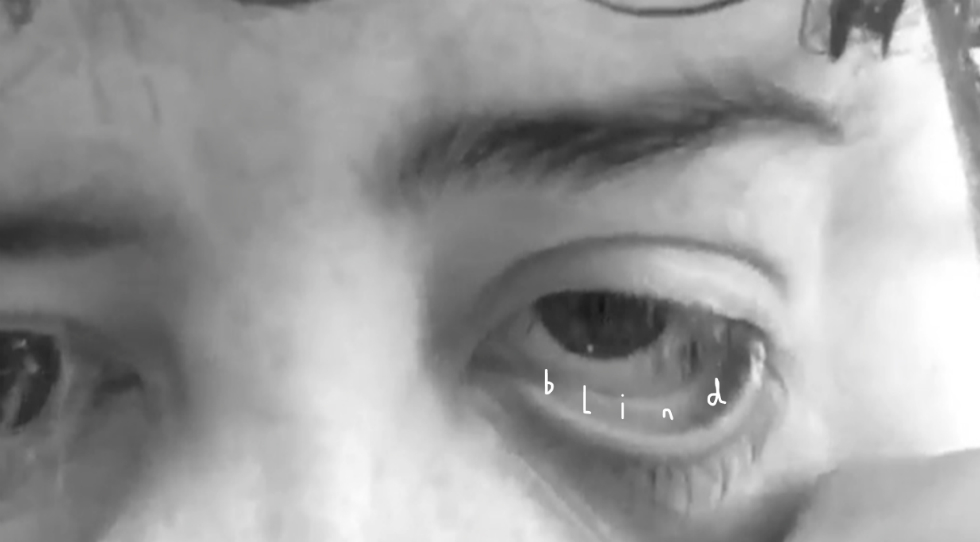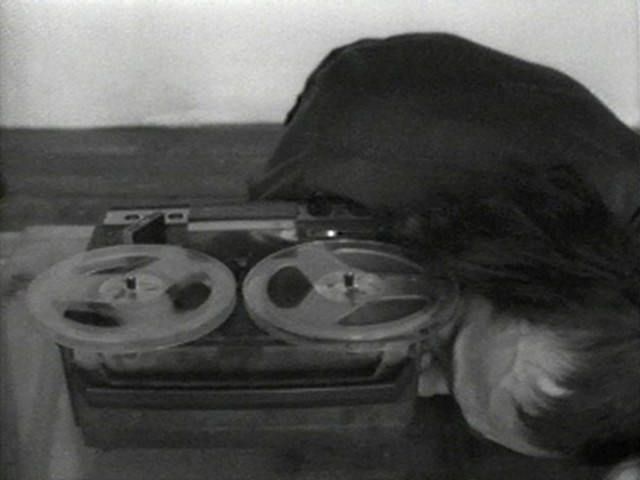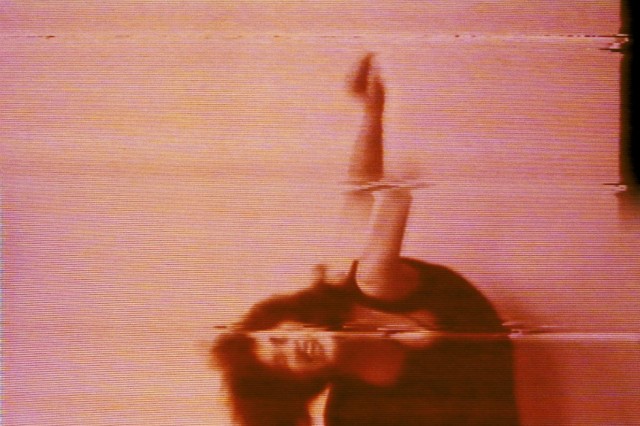Hi, How Are You? A conversation with Broken Grey Wires

“Anything is possible!” Mike Pinnington catches up with Lizz Brady for the latest in a series of conversations about her ongoing Broken Grey Wires project…
Founded in 2014, Broken Grey Wires – ‘a ground-breaking project exploring mental health in contemporary art’ – is currently marking its fifth anniversary. The brainchild of artist Lizz Brady, speaking in 2015, Brady explained what led to its inception: “I had been struggling for a long time, in and out of hospitals, no future and no plans, self-destructive and giving up. During an admission to a psychiatric ward, I began to write down ideas and artists I wanted to work with. It was a slow and steady start, but it gave me a focus and a future.”
Five years down the line, we caught up with the BGW founder to talk about her latest plans for the multi-layered project.
The Double Negative: Happy fifth anniversary! This is the latest in a number of conversations we’ve had since you founded Broken Grey Wires – what’s been going on since we last spoke?
Lizz Brady: Hello, and thanks a lot! It’s been a whirlwind of experiences since 2014 that’s for sure. Major ups and a few downs. Funding rejections, successful funding applications, major exhibitions, lots of gigs. It has been a lot of hard work but really fun too.
The past year or so, since we last spoke has been great. I organised a huge gig at Soup Kitchen in Manchester, a packed out room dancing to DUDS, Yossarians, Sweaty Palms and The Birthmarks. I had a solo exhibition in Coventry at The Pod, where I built a new installation and experimented with sound. I also put on another gig at Stereo in Glasgow, with Richard Dawson and David Thomas Broughton which was brilliant. And I showed work in Seattle, Madrid, London and Venice!
So as you can see, it’s been really busy, but amazing opportunities for me to take my work and Broken Grey Wires all round the world.
What would you like to see happen with the project over the next five years?
I would like to continue working with critically acclaimed artists, I already have lists written of new groups of artists I want to invite to future shows. I want to push curatorial ideas as far as I can, curate shows that are fascinating, interactive and motivating for audiences. I want to keep creating opportunities for the community, to open up a dialogue, to give people a safe environment to talk about mental health. I want to create anxiety toolkits for galleries. I want to open up my OWN gallery space, having an area where the public can chill out, rest, and think about the art they have seen. Art can be overwhelming, and galleries can be scary places, intimidating and a little bit clinical. I would love to rectify this, by creating a calm area, filled with comics and books exploring mental illness.
Some of this may be dreaming, but four years ago the things I am doing now were dreams. So anything is possible!
You launched a Crowdfunder campaign earlier this month, tell us about that.
The Crowdfunder is there for a number of reasons; to help with printing costs for the next art zine (which I am taking submissions for!) and raising funds to get me up and down the country, visiting the gallery in Middlesbrough where I am next exhibiting, and meeting people from the community there to discuss how I can work alongside them to create opportunities for people struggling with their mental health. It also provides match funding for Arts Council bids, which is really important.
Any kind of donation would be so welcome and you can also get some cool art rewards in return!

As you say, the Crowdfunder will help support the programming and funding of exhibitions. Tell us about the forthcoming Auxiliary Gallery show.
This is a big one! The theme as always is mental health, but also looking at society, exhaustion, dread, joy, and anxiety too. The works respond to these themes in incredibly diverse ways. Artists exhibiting include Gillian Wearing, Martin Creed, Luke Fowler, Pipilotti Rist, Vito Acconci… I am so overwhelmed with the full list. I sometimes feel like I should be more professional and not be over excited. But honestly, I AM excited, I am stunned and grateful. I suppose I cannot change who I am; self-doubt, depression, warts and all!
It is a massive opportunity for me to work with these astonishing artists and I want to make a big impact with the curation of the show. I want the exhibition to leave people wanting more, and for the audience to dream big, like I do.
I’m, like you mentioned, taking this show to Auxiliary Gallery, in Middlesbrough [in April 2020]. I feel it is important to be there – statistically there is a lot of ill mental health in the city, they also recently topped the bill for most disadvantaged authority. Having an exhibition exploring these issues in an open manner, with workshops and other opportunities to get involved, I hope, will have a positive effect on the community.
One of the artists whose work will feature in that exhibition is Daniel Johnston, who recently sadly died. He was a very unifying figure, loved by creative people of all stripes. What was it about Johnston, do you think, that made him so universally liked?
I think his honesty and openness to discuss his problems. The music he made is so devastatingly beautiful because it is true. People could relate to it. Heartbreak, depression, anxiety, failure, hope… we all experience these things in our life and Daniel really connected the dots, for me anyway, he made me believe I could be an artist. That I could create work that mirrored my mental health. I could use drawings and sound to portray my increasingly difficult thought processes. And it would be ok. Because others felt that way too, and survived.
Creating art is a privilege, to be able to look at some materials and build something that others can relate to, is magical. Sometimes I forget that, but if I pop on [Johnston’s song] The Story of an Artist and listen closely, I remember again and it makes me appreciate what I am able to do.
I really am saddened by his passing, but he inspired so many of us and his art will live on, inspiring and encouraging us to keep talking, keep sharing, and keep making!

How do you find balancing BGW with being an artist in your own right? Can you?
I think I can. One of the (more selfish) reasons why I create the BGW exhibitions, is to enhance my own artistic practice. I would never really be able to exhibit alongside such amazing artists, so I thought, well…why not create my own show and ask them to be part of it with me. It also gives me the opportunity to create new impressive works.
For Middlesbrough, I am building a 5-metre-high structure, with TVs topping it, binoculars and Bluetooth headphones will also be available! It’s a really ambitious idea and I am looking forward to building it for this show.
I am also an artist within the PROFORMA collective. I recently had a residency in Venice with them, creating two new pieces of work within 10 days, which was an incredible experience. It is hard work of course, but the rewards are there, so you just keep going!
You’ve always been very candid about your own mental health, and you initiated BGW to counteract the stigma surrounding the issue. Do you think things are getting better – in terms of there being more awareness and support?
I do believe it is getting better, there are many more schemes from mental health organisations like Mind, and Calm which people are getting involved in.
I was recently in The Castle, a pub in Manchester and got chatting to a couple of older fellas, who were discussing seeing Nirvana live. They asked what I did, and we got onto mental health. One told me he would never discuss his own emotions with his mates as he would be seen as weak. We talked a lot that night about this, and the stigma surrounding it, especially for men. As I was leaving, the guys said they would try hard to talk more, if they needed to.
I think we must engage each other, talk about our mental health and hope that helps them open up. Call your friends more, go for a drink and ask if they are ok. I’m very lucky, I have a fantastic group of mates who I can be really open with, and vice versa. And this has been a huge step in my recovery, communicating more.
Mike Pinnington
Support the Broken Grey Wires Crowdfunder
Read People Never Notice Anything, our previous conversation with Lizz Brady
Images, from top: Lizz Brady, Blind Faith (2019); Vito Acconci, Face-Off (1972); Pipilotti Rist, I’m Not The Girl Who Misses Much, both here and homepage (1986) © Pipilotti Rist/photo: Pipilotti Rist





